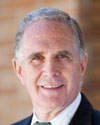

Perspectives is the newsletter of the
Stanford course,
Course News
Next class session - Thursday, March 4th at 4:30pm PST via Zoom
Abstract: Despite the 1990 Americans with Disabilities Act (ADA), it is astounding that most playground designs still fail to consider the 1 in every 4 of us living with a visible or invisible disability today. A park outing with her whole family was behind Olenka's vision to create a new kind of playground, so she could play with both her daughters who had very different needs. The urgent need to create playgrounds that would (far) surpass ADA standards was the drive behind the creation of the Magical Bridge playground whose goal was to bridge the gap between those with and without disabilities in a most magical way! Olenka and a team of volunteers raised over $4M to make the first Magical Bridge Playground a reality in Palo Alto's Mitchell Park. After opening in June 2015, it received worldwide recognition as the "nation's most innovative inclusive playground" and was even featured at the 2019 Davos World Economic Forum. Due to demand for more like it, Magical Bridge Foundation was created in 2016 and there are now 12 Magical Bridge destination playgrounds under way locally and around the world. In addition to the magical spaces they create, the foundation provides truly inclusive multigenerational programs for every "body" to enjoy - both on and off the playgrounds. Biosketch: With an undergraduate degree from Pomona College and MBA from Golden Gate University, Olenka Villarreal spent 18 years working with start-up and technology companies in Silicon Valley. When her second daughter was born with disabilities in 2003, she turned her focus on improving the quality of life of those with disabilities. Olenka serves on various boards, including for AbilityPath and Life Services Alternatives. Olenka has received recognition and awards for her pioneering work on Magical Bridge and holds a few design patents for inclusive playground equipment.
Abstract: Breaking your neck can affect nearly every part of your life. Physically, you may be paralyzed from the neck down, with no feeling in the body, unable to control your bladder or bowel or sexual function. Obviously, this affects you emotionally and socially - your education, work, house, travel, and relationships. What can assistive technology do to change this? The industrial revolution gave us new tools, special beds, mattresses, wheelchairs and cushions, catheters, implants, and many other gadgets. The microelectronic industry has revolutionized communication and control of equipment in the environment; if you can control a computer, you can control many other things. What about controlling paralyzed muscles? What about curing paralysis? Biosketch: Graham Creasey was formerly the Chief of the Spinal Cord Injury Service at the VA Palo Alto Health Care System and Paralyzed Veterans of America Professor of Spinal Cord Injury Medicine at Stanford University. He attended the University of Edinburgh Medical School in Scotland and completed specialty and sub-specialty training and accreditation in Surgery and Spinal Injuries at the Royal College of Surgeons of Edinburgh. He continues to be actively engaged in research, mainly on the restoration of bladder, bowel and sexual function using electrical stimulation. Zoom Attendance
Upcoming class sessions:
Other Email questions, comments, or suggestions - Please email me if you have general questions, comments, corncerns, or suggestions regarding the course. Thank you again for your interest. Dave
|
|||||||||||||||||||




